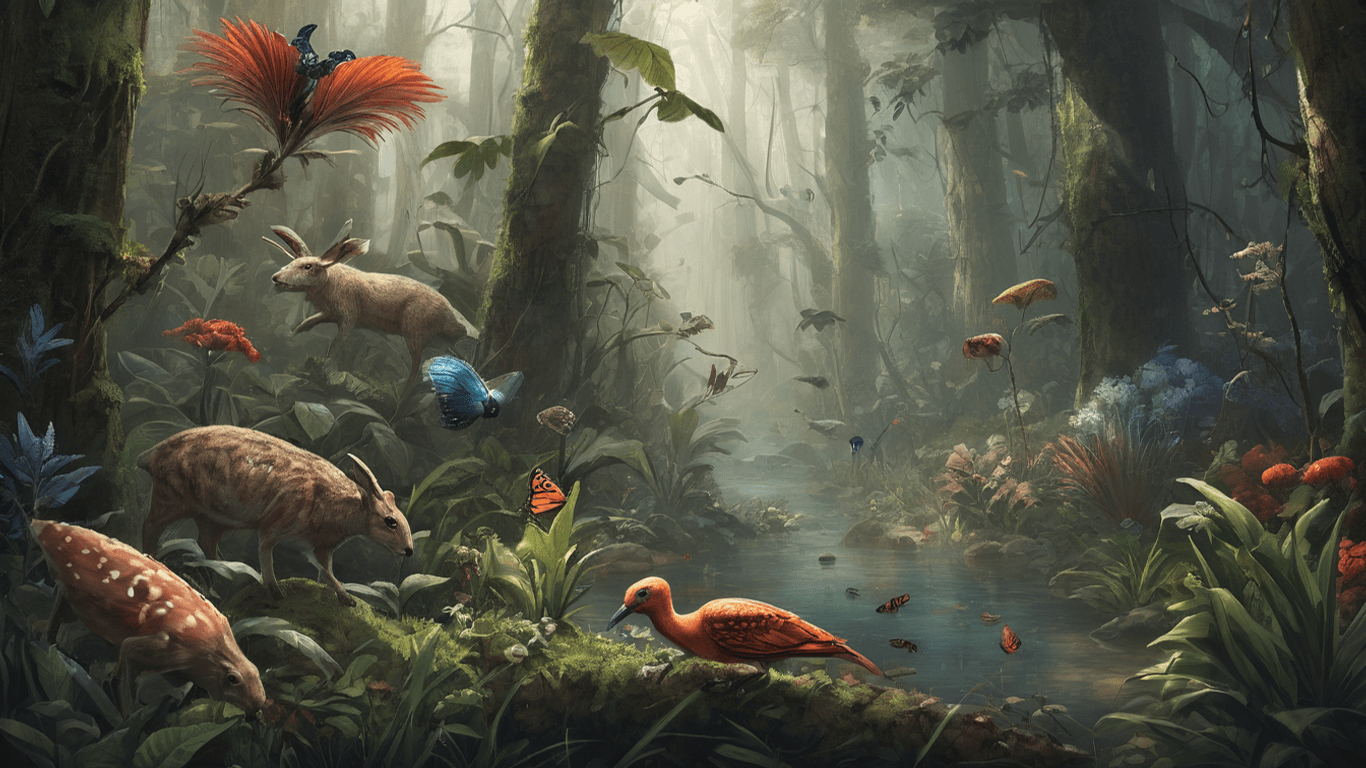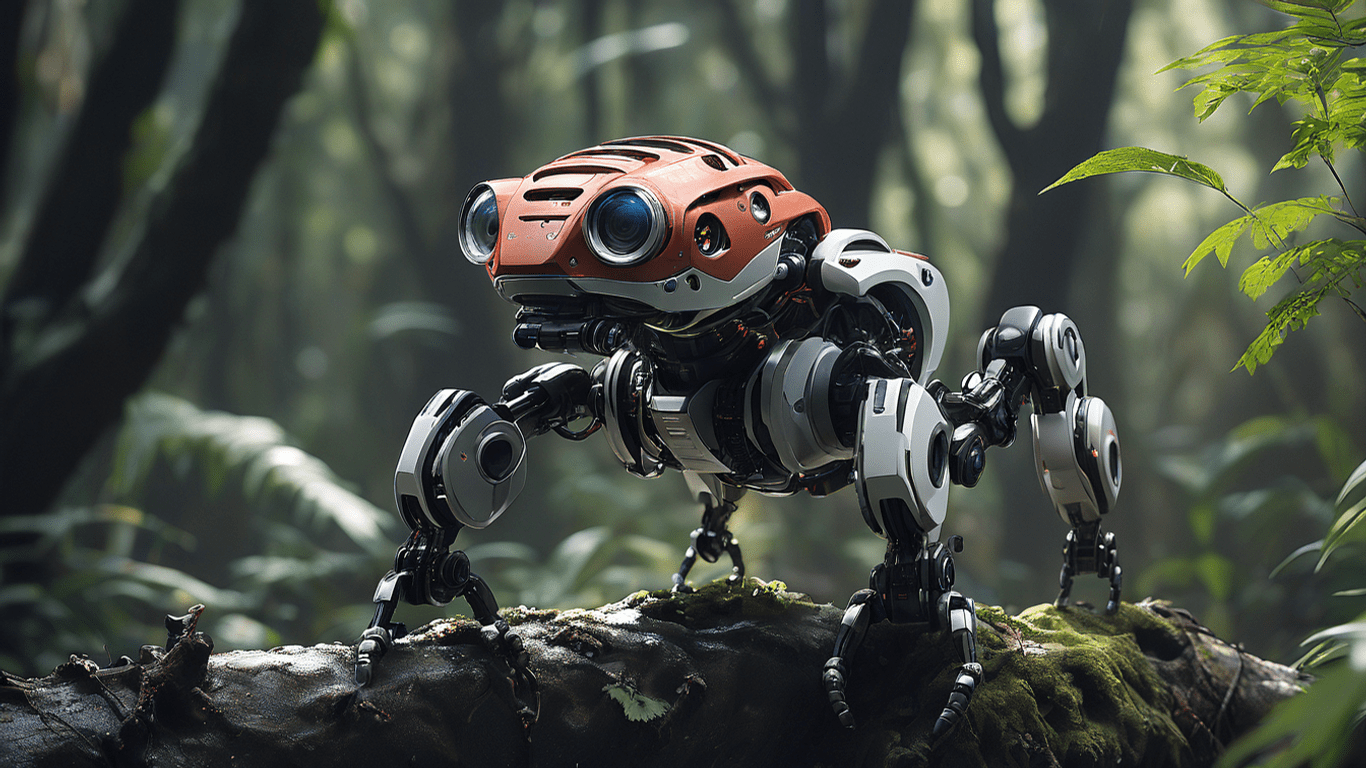In today’s digital age, technology has seeped into every aspect of our lives, including the realm of biological cataloging. Imagine a world where we can effortlessly identify and classify organisms using nothing but the power of computer vision. Welcome to the era of ZoiDex, a revolutionary tool poised to transform the way we interact with and understand the biodiversity around us.
The paper proposes ZoiDex, a system that aims to automate the cataloging and annotation of animal species using computer vision techniques. Cataloging animal species is an important biological task, but the manual process is time-consuming and expensive. The authors argue that automating this process using the latest advances in computer vision could significantly increase the rate at which new species are documented and analyzed. ( Exploring the Intersection of Technology and Life )
Exploring the Intersection of Technology and Life
ZoiDex is more than just a tool; it’s a gateway to a deeper understanding of the natural world. By harnessing the power of artificial intelligence and computer vision algorithms, ZoiDex enables users to identify and catalog various organisms quickly and accurately.
The Power of Computer Vision
At the heart of ZoiDex lies computer vision, a cutting-edge technology that allows machines to interpret and understand the visual world. Similar to how our brains process images, computer vision algorithms analyze digital images to identify patterns and objects, making them an invaluable tool for biological cataloging.
Simplifying Biodiversity Assessment
Traditionally, assessing biodiversity has been a labor-intensive process requiring extensive manual labor and expertise. With ZoiDex, this process becomes significantly more efficient, allowing researchers to survey and analyze biodiversity in a fraction of the time previously required.
Applications Across Various Fields
The applications of ZoiDex extend far beyond scientific research. From environmental monitoring to agriculture and healthcare, ZoiDex has the potential to revolutionize numerous industries by providing valuable insights into the natural world.
How ZoiDex Works
ZoiDex utilizes a combination of machine learning algorithms and image recognition technology to analyze digital images of organisms. By comparing features and patterns against a vast database, ZoiDex can accurately identify and classify organisms with impressive speed and accuracy.
Challenges and Limitations
While ZoiDex represents a significant advancement in biological cataloging, it is not without its challenges and limitations. Factors such as image quality, database accuracy, and algorithm bias can impact the reliability of ZoiDex’s classifications, highlighting the need for ongoing refinement and improvement.
Future Prospects
Despite its current limitations, the future looks bright for ZoiDex. With continued advancements in artificial intelligence and computer vision technology, ZoiDex has the potential to become an indispensable tool for researchers, educators, and conservationists worldwide.
Ethical Considerations
As with any emerging technology, ethical considerations surround the use of ZoiDex. Questions regarding data privacy, algorithmic bias, and the potential impact on traditional methods of biological cataloging must be carefully addressed to ensure the responsible and ethical use of this powerful tool.
Impact on Conservation Efforts
One of the most exciting implications of ZoiDex is its potential impact on conservation efforts. By providing researchers with a more efficient and accurate means of assessing biodiversity, ZoiDex can aid in identifying and protecting endangered species and habitats.
Embracing Technological Advancements
In conclusion, ZoiDex represents a significant step forward in the field of biological cataloging. By embracing technological advancements such as computer vision and artificial intelligence, we can unlock new insights into the natural world and pave the way for a more sustainable future.
The key contributions of the paper are:
The design of a pipeline that can automatically detect, segment, and extract visual features from animal images to categorize them into species.
A new dataset called ACDS (Automated Cataloguing Dataset for Species Identification) contains over 13,000 images across 42 classes representing different animal species.
Comprehensive experiments demonstrate that deep learning models trained on ACDS can classify species with over 90% accuracy, outperforming previous datasets and methods.
The analysis provides insights into the challenges and opportunities for using computer vision to automate biological cataloging.
Proposed Method
The proposed ZoiDex pipeline contains three key stages:
Detection – Identifies where the animal is located in the image using an object detection model.
Segmentation – Separates the animal from the background using a segmentation model. This focuses the system’s attention on the relevant regions of the image.
Feature Extraction & Classification – Extracts visual features from the segmented animal images which are fed into a classification model to categorize the species.
For detection and segmentation, the authors leverage recent advances in deep learning models designed for these tasks. The feature extraction stage uses a standard CNN architecture to create embeddings that describe the visual appearance of each animal. These embeddings are used to train multi-class classifiers to recognize different species.
Dataset
As existing datasets for animal classification were lacking in coverage and consistency, the authors introduced ACDS. Key properties:
Contains 13,345 images covering 42 distinct animal classes like bears, cats, dogs, etc.
Classes have 200-500 images each showing intra-species variation.
Images have high resolution and were filtered manually for quality.
Captures real-world challenges like occlusion, scale variation, etc.
Experiments
Several experiments compare models and parameters for the key pipeline stages:
Detection – Faster R-CNN provides a good balance of accuracy (~90% AP50) and speed.
Segmentation – The deepLab model performs best with a 95% more score.
Classification – ResNet architecture achieves over 90% accuracy, much higher than previous datasets.
Ablations explore the impact of pipeline stages on overall accuracy. The full method outperforms alternatives, highlighting that detection, segmentation, and classification are all important.
Qualitative results illustrate success cases along with remaining challenges from ambiguous species and unusual poses. Failure modes reveal areas of future work.
Conclusion
In conclusion, ZoiDex is not just a tool; it’s a catalyst for change in how we perceive and interact with the biodiversity around us. By harnessing the power of computer vision, ZoiDex opens doors to new possibilities in research, education, and conservation. As we continue to embrace technological advancements, let us remember the profound impact they can have on our understanding of the natural world and our ability to protect it for future generations.
The paper’s comprehensive experiments demonstrate promising results for using deep learning to automate animal cataloging for species identification. Introducing the ACDS dataset and end-to-end pipeline provides a strong baseline for future work on digitizing biological collections. Challenges like collecting more training data and handling trait variations within species remain. Overall, the work validates the feasibility of developing AI-powered tools that could greatly assist biologists in documenting and analyzing animal biodiversity.
FAQs (Frequently Asked Questions)
1. What is ZoiDex?
ZoiDex is a digital biological cataloging tool that utilizes computer vision technology to identify and classify organisms with speed and accuracy.
2. How does ZoiDex work?
ZoiDex works by analyzing digital images of organisms using machine learning algorithms and image recognition technology.
3. What are the applications of ZoiDex?
ZoiDex has applications across various fields, including scientific research, environmental monitoring, agriculture, and healthcare.
4. What are the limitations of ZoiDex?
Some limitations of ZoiDex include factors such as image quality, database accuracy, and algorithm bias, which can impact its reliability.
5. How can ZoiDex impact conservation efforts?
ZoiDex can aid in conservation efforts by providing researchers with a more efficient and accurate means of assessing biodiversity, thus helping to identify and protect endangered species and habitats.
By addressing these FAQs, we hope to provide a comprehensive understanding of ZoiDex and its implications for the future of biological cataloging.
Web Hosting for WordPress Website
Choosing the proper web hosting provider is one of those decisions when you create a WordPress website that will determine its success. Your hosting decision may have a significant impact on your site’s performance, security, and scalability. Within this in-depth guide, we will take you through the essential criteria that should be taken into account when choosing WordPress hosting.






